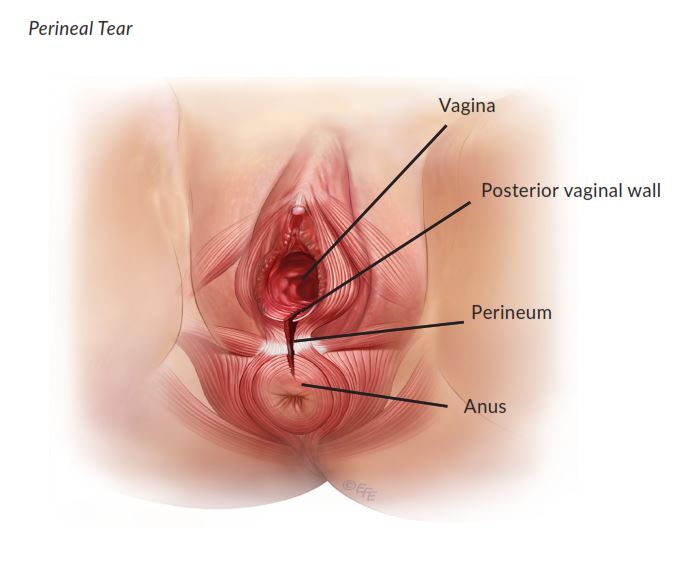Third and Fourth Degree Perineal Tears
In this Health Topic
This is a type of tear sustained during vaginal childbirth which involves the tissue of the vagina, the perineum (the area between the vagina and the anus), and the structures around the anus. If the tear involves the muscles around the anus it is called a third degree tear. If it also involves the tissue on the inside of the anus it is called a fourth degree tear.
Approximately 1-3% of women who deliver vaginally will experience third and fourth degree tears. Factors such as having a vacuum or forceps delivery, having a large baby, or having a baby that is delivered face up increase the risk of sustaining a third or fourth degree tear. Often there is no particular reason identified for the injury.

Third and fourth degree tears are repaired in the operating room, usually under local or regional ansethsia. You will be given antibiotics in the operating room and the layers of the tear will be stitched back together. The stitches will dissolve by themselves. A catheter will be left in your bladder until the anesthetic has worn off.
Risk of complication is 5-10% and they include a risk of abscess formation, infection, painful intercourse, or bowel leakage.
After sustaining a third or fourth degree tear, antibiotic treatment for a week is recommended. Stool softeners and laxatives are recommended for two weeks to make bowel movements easier. You will also be given pain medication to take home. All of the medications that you will be given are safe to take while breastfeeding. If you have access to a physiotherapist, take advantage of that; regular pelvic floor exercises are recommended throughout the post-natal period.
You will be offered an appointment with a doctor 8 to 10 weeks following your delivery. At this appointment you will be asked some questions about your delivery and any bowel symptoms that you might have. You will be examined to make sure that the perineum has healed properly. You will also have the opportunity to discuss your delivery and ask any questions.
You may also be offered a specialized internal scan of the entrance to the anus. This allows your doctor to confirm that the anal muscles have healed together adequately. The scan may feel slightly uncomfortable but is not painful.
Studies have shown that the majority of women (85%) recover well and have no problems at the 3-year follow-up after surgical repair of the tear. A small number of women may have problems at follow-up such as urgency (being unable to hang on and having to rush to the toiled to open the bowels) or incontinence (being unable to control bowel movements or gas). Most of the time, these problems will settle with measures such as physiotherapy. A small proportion of women will need further treatment for bowel disturbances.
The overall risk of having another third or fourth degree tear with future deliveries is 5-7%. Aiming for a normal delivery in any future pregnancies is generally recommended if you do not have any bowel symptoms and the muscle appears to be well healed. However, women who have had a third or fourth degree tear ideally should be seen by a doctor in the antenatal clinic in their subsequent pregnancies to discuss options.
